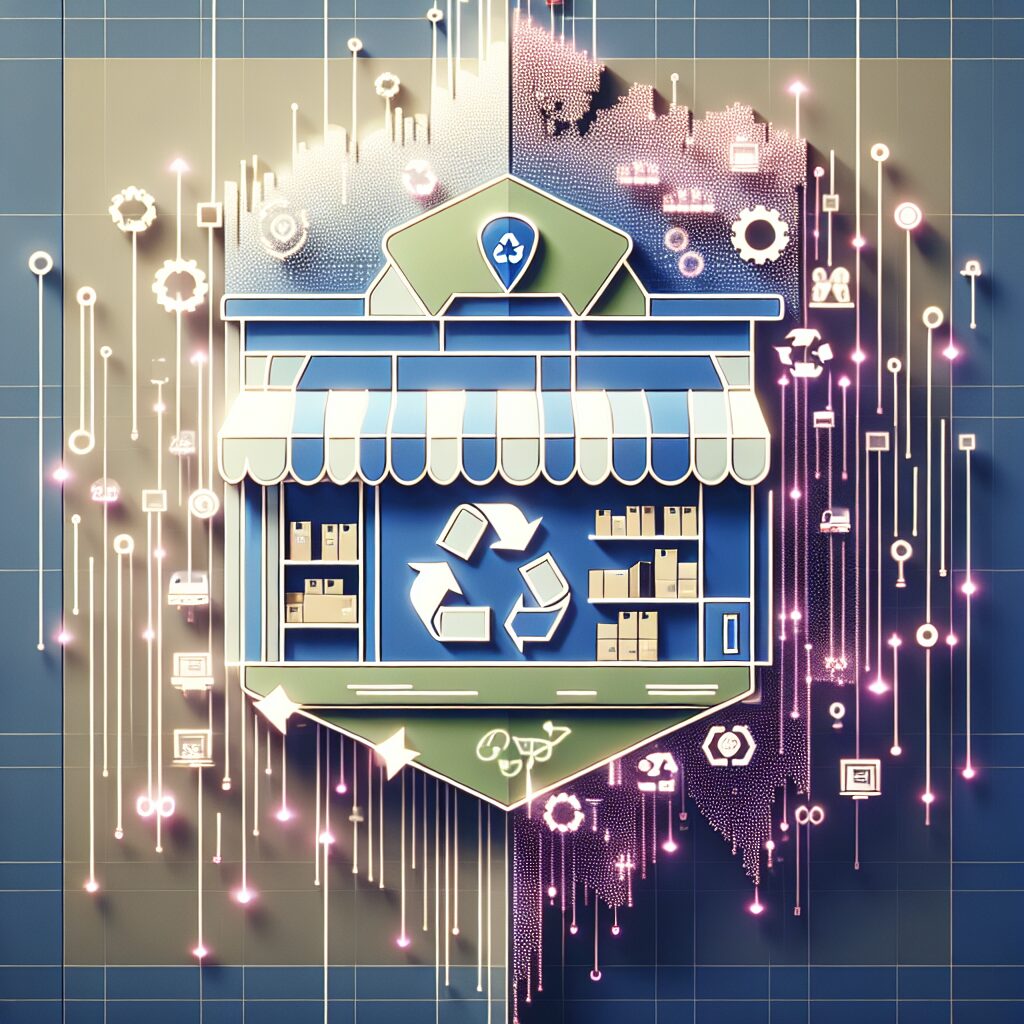About eldris
epr.eldris.ai leads the EPR sector, in fast, automated, AI Agent EU Complaince. LUCID Packaging, WEEE, and Battery Compliance for Brands, E-Commerce and Service based businesses expanding into the EU.
In This Article
- Ensure EU WEEE compliance before entering any European market to avoid legal and financial risks.
- Appoint an authorised EU Responsible Person if your business is based outside the EU.
- Register WEEE properly in each country and understand the reporting nuances of each jurisdiction.
- Use automated tools to scale compliance efficiently and reduce manual errors.
- Treat compliance as a business advantage—enhanced trust, market access, and brand positioning await.
Understanding EU WEEE Compliance Regulations
The Core Principles of the WEEE Directive
The Waste Electrical and Electronic Equipment (WEEE) Directive is one of the European Union’s cornerstone environmental regulations. It aims to reduce electronic waste and improve the environmental performance of businesses dealing in electrical and electronic equipment. At its core, EU WEEE compliance mandates that all producers, importers, and retailers of such goods are fully responsible for the take-back, recycling, and safe disposal of electronic waste.
First introduced in 2003 and revised in 2012 under Directive 2012/19/EU, the WEEE framework applies to a broad category of products—from mobile phones and kitchen appliances to LED bulbs and electric tools. If you’re selling eligible goods within the EU, your business must align with these regulations to legally operate.
Under the directive, compliance includes marking electrical equipment with a crossed-out wheelie bin symbol, registering with national authorities, filing regular WEEE reports, and taking part in national collection schemes. In effect, it instils the principle of Extended Producer Responsibility (EPR)—a policy approach where producers bear significant responsibility for the post-consumer stage of their products’ life cycle.

Cross-Border E-Commerce & Legal Responsibilities
Why Compliance Matters for International Sellers
For e-commerce businesses operating across multiple jurisdictions in Europe, EU WEEE compliance is more than a bureaucratic hurdle—it is a legal cornerstone fundamental to risk mitigation and long-term scalability. Non-compliant businesses face heavy penalties, legal sanctions, and in some cases, a ban on selling products within member states.
Moreover, as cross-border trade accelerates, national authorities are collaborating across borders to enforce existing environmental laws. Whether you’re dispatching goods from Amazon fulfilment centres or operating a direct-to-consumer model from outside Europe, you are still bound by WEEE obligations in each country in which you sell.
Importantly, with the rise of sustainability-focused consumers and green certification requirements, compliance can confer a market edge. Meeting WEEE standards demonstrates your brand’s commitment to corporate responsibility, which enhances trust and increases conversions among eco-conscious demographics.
“Selling across EU borders without ensuring EU WEEE compliance is like building a house on sand—it only takes one inquisitive regulator to bring operations to a halt.”
Appointing an EU Responsible Person
If your business is registered outside the EU but targets consumers within its borders, you are legally obliged to appoint an EU-based authorised representative or ‘Responsible Person’. This person acts as your compliance liaison, engaging with local authorities and carrying out essential tasks such as device registration, documentation filing, and ensuring product labelling accuracy.
The Responsible Person must reside in the country where the goods are sold and be empowered to act on behalf of your company in legal matters. This requirement is particularly crucial for UK-based retailers post-Brexit, as they now fall under the category of non-EU economic operators. The process involves a formal agreement and submission to relevant WEEE registries, aligning with the local interpretations of the directive.
Not only does this facilitate compliance, but it also streamlines interactions with enforcement bodies, reduces delays, and signals operational seriousness to partners and customers alike.
The WEEE Registration and Reporting Process
WEEE registration occurs at the national level in each EU country where you intend to sell. Each member state maintains its own WEEE register and reporting standards. Therefore, multi-market sellers must often comply with diverse administrative processes, unique reporting frequencies, and documentation languages.
The typical registration procedure involves identifying product categories, estimating shipment volumes, and appointing a take-back scheme partner. These are government-approved recyclers tasked with collecting decommissioned goods. Fees vary by country and are usually based on unit weight or projected sales volumes.
Crucially, registered businesses are obligated to submit periodic WEEE reports—typically quarterly or annually. These reports include data on units sold, product weights, and collection statistics. Failure to report accurately or on schedule can trigger audits and penalties.
To remain compliant at scale, many businesses choose to partner with consultancies or compliance management platforms that automate documentation and scheduling. This saves significant internal resources and reduces the risk of errors.
Country-Specific WEEE Requirements Across the EU
While the overarching EU directive remains consistent, each member country adapts implementation through its national legislative framework. For instance, Germany’s WEEE Act (ElektroG) requires registration via Stiftung EAR and imposes specific labelling rules and monthly reporting schedules. Operating without registration can lead to fines of up to €100,000 and product delisting.
In contrast, France mandates eco-contributions through certified Producer Responsibility Organisations (PROs) and enforces the use of language-specific documentation. Spain requires a detailed stock-keeping unit (SKU) differentiation for reporting, while Ireland focuses heavily on retailer obligations for return facilities.
This fragmentation often confuses new sellers. However, understanding local nuances is essential to full EU WEEE compliance. Engaging with local agents or pan-European compliance facilitators can help navigate these disparate processes effectively.
How WEEE Compliance Enables Seamless EU Expansion
Countless e-commerce sellers view EU WEEE compliance as a roadblock. In truth, it is an enabler of cross-border growth. Compliant sellers gain unrestricted access to lucrative European markets and can expand confidently, knowing they meet all legal and environmental standards.
Large marketplaces like Amazon, Allegro, or Cdiscount increasingly demand proof of compliance before permitting listings. This is particularly true for electric goods, where platform algorithms prioritise regulated sellers. In effect, WEEE compliance becomes a core prerequisite for digitally scaling retail operations in Europe.
Furthermore, by integrating sustainability into operations, brands create customer goodwill, improve lifetime value metrics, and reduce returns. Compliant businesses are also eligible for inclusion in various B2B procurement indices, boosting their visibility across institutional buyers.
Ultimately, those who treat compliance as a growth lever, not just a checkbox, see accelerated and more sustainable market entry.
Automating Compliance for Scalability
Manual compliance management becomes increasingly untenable as operations expand. The process is time-consuming, error-prone, and resource-draining. Fortunately, many software providers now offer automation tools that can streamline reporting, monitor compliance statuses, and facilitate inter-country data aggregation.
Using such platforms, sellers can automatically schedule report submissions, flag inconsistencies, and receive updates on evolving regulations. For example, integration with enterprise resource planning (ERP) systems allows real-time tracking of electronics shipments and immediate flagging of new items requiring registration.
Partnering with digital compliance providers also opens the door for centralised dashboards that offer visibility into multi-country operations. This empowers global compliance managers with actionable insights and tighter audit readiness across European ventures. Automation significantly reduces overhead costs and human error risk, while supporting future growth.
Common Pitfalls and How to Avoid Them
Several recurring challenges plague e-commerce businesses aiming for EU WEEE compliance. Firstly, businesses often understate their reporting volumes—either due to poor inventory tracking or a misunderstanding of weight-based declarations. Audits frequently reveal underreporting, resulting in fines and reputational harm.
Secondly, some companies neglect to update their product categories or fail to adapt to changes in national registries. This lapse leads to non-compliance despite registration, undermining even well-intentioned efforts. Thirdly, over-reliance on marketplaces to manage compliance is risky. While platforms assist, the legal duty remains with the seller.
To avoid these pitfalls, businesses must implement transparent inventory systems, maintain regular communication with their Responsible Person, and revisit their WEEE obligations quarterly. Self-audits and checklists can reinforce internal procedures.
Real-World Examples of E-Commerce Compliance Success
Several e-commerce brands have leveraged WEEE compliance to fuel their European ambitions. A notable example is a UK-based consumer electronics start-up that expanded into six EU markets post-Brexit. By appointing local representatives and automating its reporting through a cloud platform, it achieved full compliance in under four months. This rapid enablement facilitated market penetration and increased returns by 23% within a year.
Similarly, a Canadian lifestyle tech company operating via Shopify streamlined WEEE fulfilment by using a third-party logistics provider trained in compliance requirements. This early strategic move allowed it to scale across France, Italy, and the Netherlands without litigation concerns or fulfilment delays.
These cases underscore that robust compliance planning translates not only to risk reduction but also to real financial growth.
Conclusion: Achieve Growth Through Smart Compliance
[CONCLUSION_CONTENT]
Great guide on eu-weee-compliance-cross-border-ecommerce-growth – Community Feedback
What is WEEE compliance and why does it matter for cross-border e-commerce?
WEEE compliance refers to fulfilling EU regulations for recycling and reporting of electronic and electrical equipment. For cross-border e-commerce, compliance is critical to legally sell, avoid penalties, and build trust in EU markets.
Do non-EU sellers need a Responsible Person for WEEE compliance?
Yes. Non-EU sellers must appoint an EU-based Responsible Person to manage WEEE obligations, including registration, take-back, and reporting requirements for their electrical and electronic products.
How does WEEE compliance help scale e-commerce across Europe?
WEEE compliance enables e-commerce businesses to expand seamlessly into new European markets by ensuring their products are legally accepted, reducing customs delays, and enhancing brand credibility.










